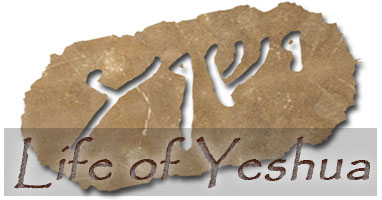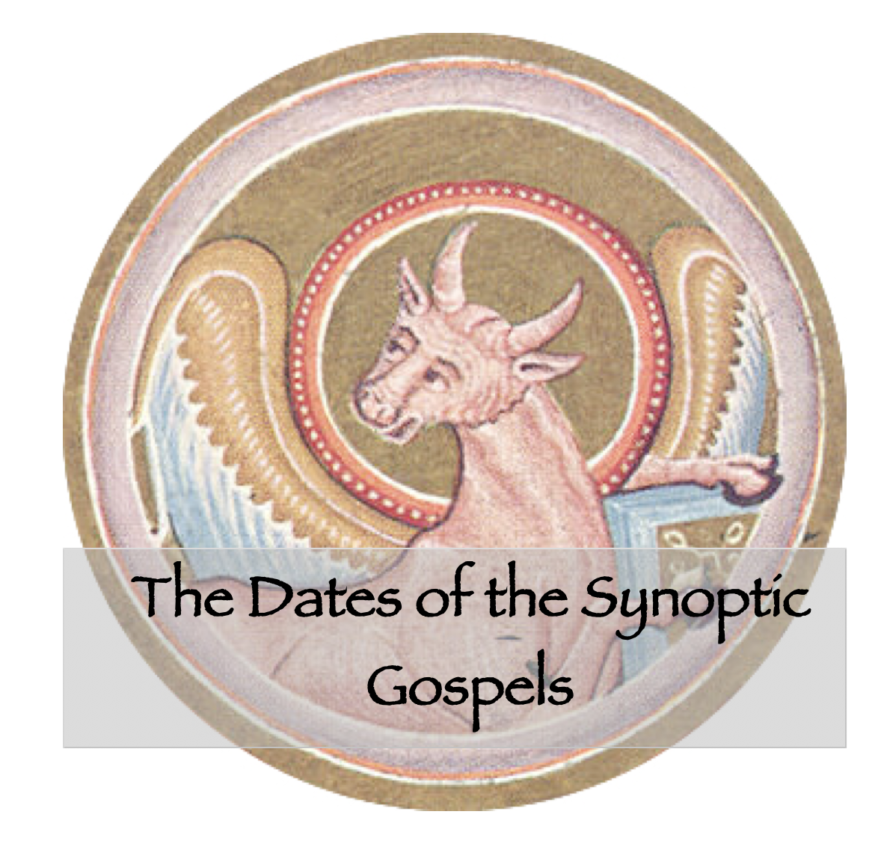How to cite this article:
David N. Bivin and Joshua N. Tilton, “LOY Excursus: The Dates of the Synoptic Gospels,” The Life of Yeshua: A Suggested Reconstruction (Jerusalem Perspective, 2020) [https://www.jerusalemperspective.com/20163/].
Robert Lindsey’s solution to the Synoptic Problem calls for reassessing the dates the Gospels are supposed to have been written.[10] Working from the assumption that the Gospel of Luke made use of the Gospel of Mark, most New Testament scholars date the Gospel of Luke and the Book of Acts sometime after the destruction of the Temple in 70 C.E.[11] According to Lindsey’s hypothesis, on the other hand, the Mark-Luke relationship is just the opposite of what most scholars assume. Lindsey supposed that the author of Mark knew and used the Gospel of Luke and the Book of Acts when composing his Gospel.
Premium Members and Friends of JP must be signed in to view this content.
If you are not a Premium Member or Friend, please consider registering. Prices start at $5/month if paid annually, with other options for monthly and quarterly and more: Sign Up For Premium
 Click here to return to The Life of Yeshua: A Suggested Reconstruction main page.
_______________________________________________________
Click here to return to The Life of Yeshua: A Suggested Reconstruction main page.
_______________________________________________________
- [1] See Fitzmyer, 1:54; Nolland, Luke, 1:xxxviii. ↩
- [2] For arguments in favor of a pre-70 C.E. date for Acts, see John A. T. Robinson, Redating the New Testament (Philadelphia: Westminster Press, 1976), 86-92. ↩
- [3] This point is, of course, contested. Cf., e.g., Fitzmyer, 2:1343; Bovon, 2:115. However, neither the prophecy in Luke 19:41-44 nor the prophecy in Luke 21:20-24 contain details that only could have been known after the destruction of the Temple in 70 C.E. Both prophecies contain generic predictions that might describe almost any siege. None of the details specific to the siege of Jerusalem—the famine, the crucifixion of those attempting to escape, the conflagration of the Temple, or the Temple’s capture, contrary to popular expectations, before the capture of the lower and upper city—are reflected in Luke. Cf. Nolland, Luke, 3:1000; Wolter, 2:427. ↩
- [4] See Yerushalayim Besieged, under the subheading “Story Placement.” ↩
- [5] See Peter J. Tomson, “The Wars Against Rome, the Rise of Rabbinic Judaism and of Apostolic Christianity, and the Judaeo-Christians: Elements for a Synthesis,” in The Image of Judaeo-Christians in Ancient Jewish and Christian Literature (ed. Peter J. Tomson and Doris Lambers-Petry; Tübingen: Mohr Siebeck, 2003), 1-31, esp. 8-14; idem, “The Didache, Matthew, and Barnabas as Sources for Early Second Century Jewish and Christian History,” in Jews and Christians in the First and Second Centuries: How to Write Their History (ed. Peter J. Tomson and Joshua Schwartz; Leiden: Brill, 2014), 348-382, esp. 363-370. ↩
- [6] Although the Greek language is not specifically mentioned in Acts 2:5-11, Greek was the lingua franca of the eastern half of the Roman Empire, so we may be assured that Greek-speaking Jews were included in the list of pilgrims from Cappadocia, Pontus, Asia, Phrygia, Pamphylia, Egypt and Cyrene. The Jewish community in Rome was also Greek-speaking, for which reason Paul’s Epistle to the Romans was composed in Greek, and even Josephus’ works, aimed at Roman and Jewish audiences, were composed in Greek. On Greek in first-century Jewish society, see G. Mussies, “Greek in Palestine and the Diaspora” (Safrai-Stern, 2:1040-1064). For an earlier period but with relevant information nonetheless, see James Barr, “Hebrew, Aramaic and Greek in the Hellenistic Age,” in The Cambridge History of Judaism (8 vols.; ed. W. D. Davies et al.; Cambridge: Cambridge University Press, 1984-2017), 2:79-114, esp. 98-110. On the limited use of Latin in first-century Jewish society, see Jonathan J. Price, “The Jews and the Latin Language in the Roman Empire,” in Jews and Gentiles in the Holy Land (ed. Menachem Mor, Aharon Oppenheimer, Jack Pastor, and Daniel R. Schwartz; Jerusalem: Yad Ben-Zvi, 2003), 165-180. ↩
- [7] Such events are known to have occurred by the mid-40s C.E. See Josephus’ report on the would-be prophet Theudas (Ant. 20:97-98), whose uprising was put down during Fadus’ term as the Judean governor from 44-46 C.E. Josephus also reports that two revolutionary leaders, Jacob and Simon, sons of Judas the Galilean, were crucified during the term of Tiberius Julius Alexander (46-48 C.E.; Ant. 20:102). It is possible that the family of Judas the Galilean entertained messianic ambitions. ↩
- [8] For an intriguing interpretation of the difficult passage in 1 Thess. 2:14-16, see Serge Ruzer, “Nascent Christianity Between Sectarianism and Broader Judaism: Lessons from the Dead Sea Scrolls,” in The Dead Sea Scrolls and Contemporary Culture: Proceedings of the International Conference held at the Israel Museum, Jerusalem (July 6-8, 2008) (ed. Adolfo D. Roitman, Lawrence H. Schiffman, and Shani Tzoref; Leiden: Brill, 2011), 477-493, esp. 489. ↩
- [9] On evidence for a Judean persecution in 48-49 C.E., see Marcus Bockmuehl, “1 Thessalonians 2:14-16 and the Church in Jerusalem,” in Not in the Word Alone: The First Epistle to the Thessalonians (ed. Morna D. Hooker; Rome: Benedictina, 2003), 55-87, esp. 73-87. ↩
- [10] For abbreviations and bibliographical references, see the Introduction to ‘The Life of Yeshua: A Suggested Reconstruction. The LOY Intro. also provides an overview of Lindsey’s synoptic hypothesis. See the Introduction to The Life of Yeshua: A Suggested Reconstruction, under the subheading “A New Approach to the Synoptic Gospels.” ↩
- [11] A date for Luke-Acts ca. 80-90 C.E. is frequently suggested. See Fitzmyer, 1:57; Bovon, 1:9; Wolter, 1:12. However, Nolland (Luke, 1:xxix) dated Luke’s Gospel from the late 60s to the late 70s C.E. Cf. Marshall, 35. ↩




